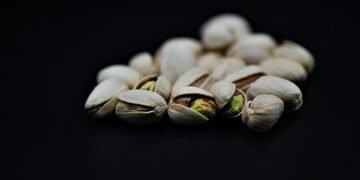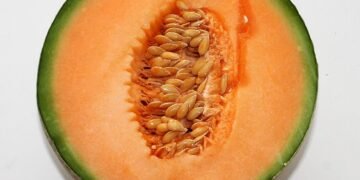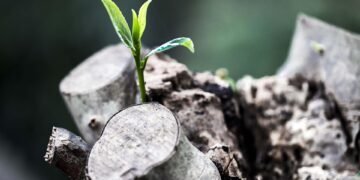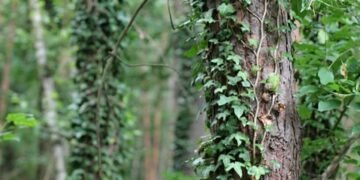Unlocking the Secret to Perfectly Cloned Cannabis: Mastering the Art of Replication
In the world of cannabis cultivation, the ability to clone plants is a valuable skill that can help growers achieve consistent results and maintain the genetic integrity of their favorite strains. Cloning involves taking a cutting from a mature plant and rooting it to create a genetically identical copy. With the right techniques and knowledge, growers can unlock the secret to perfectly cloned cannabis and achieve impressive results time and time again.
Understanding the Basics of Cloning Cannabis
Before delving into the intricacies of cloning cannabis, it is important to understand the basic principles behind the process. Cloning involves taking a cutting, or a small piece of a mature plant, and encouraging it to develop roots so that it can grow into a new, genetically identical plant. This allows growers to replicate the desirable traits of a particular plant without having to rely on seeds, which can introduce genetic variability.
To successfully clone cannabis, growers must pay attention to several key factors, including the age and health of the donor plant, the method of cutting and rooting, and the environmental conditions in which the clone will be grown. By mastering these elements, growers can ensure that their clones develop into healthy, robust plants that produce high-quality yields.
Choosing the Right Donor Plant
One of the most important factors in successful cloning is selecting the right donor plant. The donor plant should be healthy, disease-free, and in the vegetative stage of growth. It is also important to choose a plant that exhibits the traits you wish to replicate, such as high yields, potent effects, or specific flavors and aromas.
When selecting a donor plant, look for plants with strong, sturdy stems and healthy leaves. Avoid plants that show signs of stress, such as yellowing leaves, wilting, or pest infestations. It is also important to choose a plant that is at least 2-3 weeks into the vegetative stage, as younger plants may not have developed enough root mass to support the cutting.
Taking the Cutting
Once you have selected a suitable donor plant, it is time to take a cutting. Using a clean, sharp pair of scissors or a razor blade, cut a small branch from the donor plant just below a node, where the leaf meets the stem. The cutting should be 4-6 inches long and include at least two nodes, which will be the sites where roots will develop.
After taking the cutting, immediately place it in a glass of water to prevent air bubbles from entering the stem and disrupting the flow of nutrients. It is important to take the cutting quickly and with precision to minimize stress on the plant and increase the chances of successful rooting.
Rooting the Cutting
Once you have taken the cutting, it is time to encourage it to develop roots. There are several methods for rooting cannabis cuttings, including using a rooting hormone, a rooting cube, or a soilless medium such as rockwool or perlite. Regardless of the method you choose, it is important to provide the cutting with the right balance of moisture, nutrients, and oxygen to support root development.
If using a rooting hormone, dip the cut end of the cutting into the hormone before placing it in a rooting cube or medium. This will help stimulate root growth and increase the chances of successful rooting. Keep the cutting in a warm, humid environment with plenty of light to encourage root development.
Transplanting and Growing the Clone
Once the cutting has developed roots, it is time to transplant it into a larger container and begin the process of growing the clone into a mature plant. Choose a well-draining potting mix and place the rooted cutting in the center, covering the roots with soil and gently pressing down to secure the plant in place.
Provide the clone with plenty of light, water, and nutrients to support its growth. It is important to monitor the clone closely and make adjustments to its care as needed. As the clone grows, you may need to transplant it into a larger container to accommodate its increasing size and root mass.
Common Questions About Cloning Cannabis
As with any aspect of cannabis cultivation, cloning can be a complex and nuanced process that requires careful attention to detail. Here are some common questions that growers may have about cloning cannabis and how to address them:
1. How long does it take for a cannabis cutting to root?
The time it takes for a cannabis cutting to root can vary depending on several factors, including the health of the cutting, the method of rooting, and environmental conditions. In general, most cuttings will develop roots within 7-14 days, although some may take longer. It is important to be patient and provide the cutting with the right conditions to support root development.
2. How can I increase the success rate of my cannabis clones?
To increase the success rate of your cannabis clones, it is important to pay attention to several key factors, including the health of the donor plant, the method of cutting and rooting, and environmental conditions. By selecting a healthy donor plant, taking the cutting quickly and with precision, and providing the clone with the right balance of moisture, nutrients, and light, you can increase the chances of successful rooting.
3. Can I clone a flowering cannabis plant?
While it is possible to clone a flowering cannabis plant, it is generally not recommended. Cloning a flowering plant can be more challenging and may result in lower success rates compared to cloning a plant in the vegetative stage. It is best to clone plants that are at least 2-3 weeks into the vegetative stage to ensure the best chances of successful rooting.
4. How many times can I clone a cannabis plant?
Cannabis plants can be cloned multiple times, although the success rate may decrease with each subsequent cloning. It is generally recommended to clone a plant no more than 2-3 times to maintain the genetic integrity and vigor of the plant. After several rounds of cloning, it is best to start with a new donor plant to ensure the best results.
5. Can I clone autoflowering cannabis strains?
Autoflowering cannabis strains are unique in that they automatically switch from the vegetative stage to the flowering stage based on age, rather than light cycles. While it is possible to clone autoflowering strains, it is important to note that the clones will retain the same flowering characteristics as the parent plant. It is generally best to clone photoperiod strains to maintain more control over the flowering cycle.
By addressing these common questions and providing growers with valuable information and tips for successful cloning, we can help them unlock the secret to perfectly cloned cannabis and achieve impressive results in their cultivation endeavors.
Conclusion
Cloning cannabis is a valuable skill that can help growers replicate their favorite strains and achieve consistent results in their cultivation endeavors. By understanding the basic principles of cloning, selecting the right donor plant, taking the cutting with precision, and providing the clone with the right conditions to support root development, growers can unlock the secret to perfectly cloned cannabis and achieve impressive results time and time again.
By addressing common questions and providing valuable information and tips for successful cloning, we can help growers master the art of replication and maintain the genetic integrity of their favorite strains. With the right techniques and knowledge, growers can unlock the secret to perfectly cloned cannabis and achieve impressive results in their cultivation endeavors.




















![The Mind-Blowing Effects of [Cannabis Strain]](https://cannabisdailyguide.com/wp-content/uploads/2025/10/tree-4138799_960_720-360x180.jpg)

















































